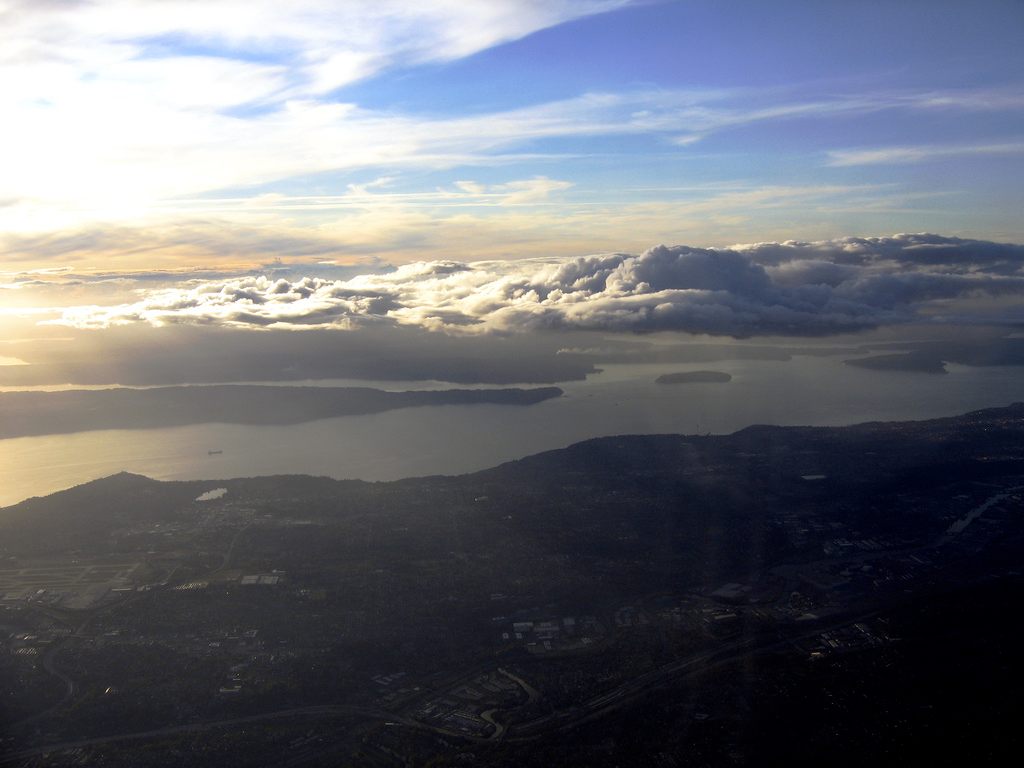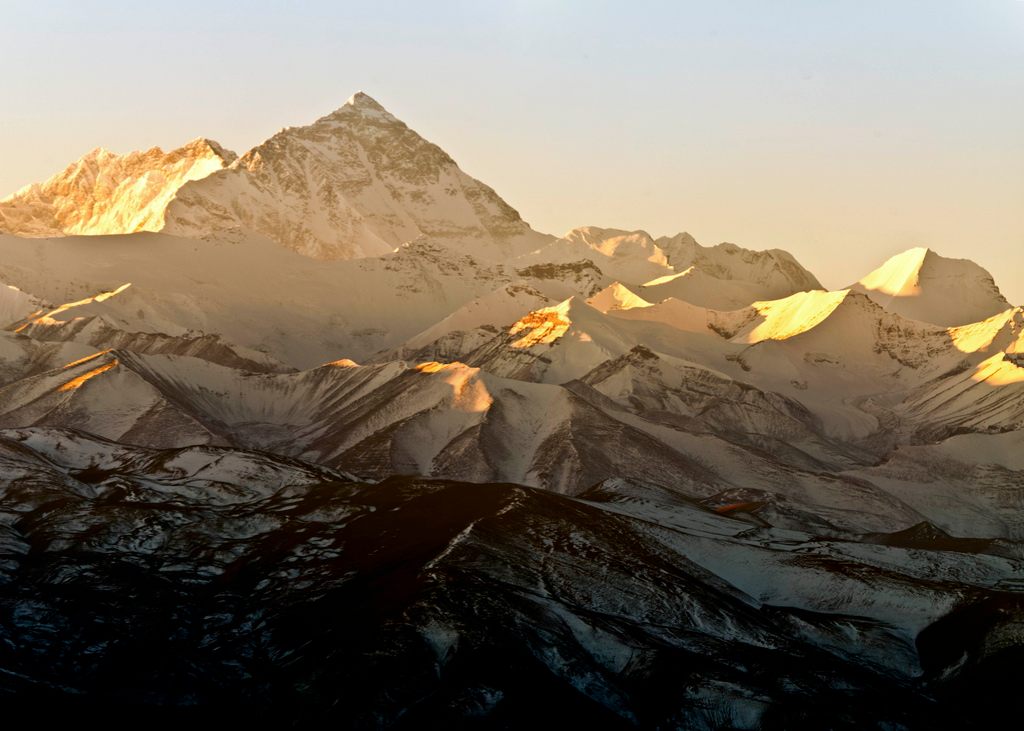Is Your Pumpkin Spice Latte Polluting Rivers?

The Starbucks Pumpkin Spiced Latte, coming to a waterway near you. (Photo:Edgar Zuniga Jr./flickr)
Beware the pumpkin spice latte — not for what it does going into your body, but where goes upon its exit.
Researchers in Washington State have spent over a decade analyzing the contents of nearby water channels, and their findings were… well… a bit spicy. That is, kitchen spices were found in the rivers, and their presence ebbed and flowed with the seasons.
The program is called Sound Citizen, and utilizes members of the Pacific Northwest community to take samples of their local waterways. The research, when it first began more than ten years ago, focused primarily on both the Puget and Barkley Sound. The project has since evolved, and even extended its testing methods to more exotic places like Mount Everest.

Puget Sound, viewed from the air, one of the sites which Sound Citizen tests for pollutants. (Photo: Liz Lawley/flickr)
Sound Citizen began as a way to figure out which pollutants are flowing from sewage treatment plants back into the wild. University of Washington scientist Rick Keil, who founded the project, wanted to understand exactly what non-water traces were hitting the Puget Sound. Starting in the 2000s, scientists started finding “dead zones” started forming in the waters. These zones mutated bottom-feeding fish into asexual amphibians, thus making them unable to reproduce. It was unclear what was the cause of these fish-killing zones, and Keil wanted to deeply analyze the water pollution to see if humans were at fault.
Indeed, they were. Initial samples showed that not only were spices like vanilla and cinnamon showing up, but also hundreds of chemicals. Though the spices seem like a silly digression, they also helped contextualize the data. For instance, in the fall, cinnamon saw a huge uptick — specifically during and after Thanksgiving. More, artificial vanilla begins to increase in the summer, likely due to ice cream. This is all to say that the trace amounts of spices found in the Puget Sound were occurring seasonally and in tandem with human consumption.

Ingredients in a Pumpkin Spice Latte: spice flavors, milk, espresso, whipped cream, topped with pumpkin pie spice. (Photo: hirotomo t/flickr)
Human waste was likely the cause of these elements — someone drank a frothy cinnamon-y pumpkin spice latte and then peed it out a few hours later. Waste is sent from toilets and drains to nearby treatment plants, where ideally the contaminants will be removed. Then the newly-cleaned water will be reintroduced into the waterways. But the findings show that the process is imperfect, and leaves trace amounts of other materials still in the water.
The initial research focused on understanding the trace pollutants in very specific Pacific Northwest waters, but over the last ten years it has morphed into different avenues. For one, it’s become a citizen testing project where local schools and citizens can go to the water banks, take samples, and mark their GPS coordinates. This has helped Citizen Sound build a more robust dataset.

Mount Everest, where scientists use Sound Citizen’s techniques for tracking trace elements. (Photo: Göran Höglund (Kartläsarn)/flickr)
Spices aren’t the only concern here, either. Other trace pollutants, like caffeine and ibuprofen, have become more of interest to the project. And Citizen Sound’s technique of tracking the trace elements has been used by scientists on Mount Everest in 2013 who were hoping to measure their water pollution, which is ever-increasing due to human waste.
The Everest project analyzed the local drinking water to see just how much human contamination was in there. In fact, there was quite a bit. They found levels of painkiller traces that were comparable to other samples taken right outside of septic tanks. “The fact that we are seeing these high levels of anthropogenic drugs reinforces that the source is human,” Puget Sound Institute researcher Justin Miller-Schulze told the University’s blog.

It’s everywhere: a Pumpkin Spiced Latte chocolate bar. (Photo: Mike Mozart/ flickr)
What began as a scientific project analyzing local rivers has transformed into a new way to understand water pollution. The work intends to highlight just the sort of impact what you put down the drain has. While spices in the water may not sound so bad, more destructive products like fragrances have shown alarmingly high traces in Washington waters. Sound Citizen’s website even has an entire section dedicated to educating people on the harms of fragranced items. “Fragrances and other chemicals from everyday products are going into our airways, down our sinks, showers, toilets, washing machines, and dishwashers—and getting into Puget Sound,” it writes.
And while you should be avoiding those contaminants in general, it may be harder to say no to treats like the infamous lattes and pumpkin pie. All the same, they will likely end up in your water.
Gastro Obscura covers the world’s most wondrous food and drink.
Sign up for our email, delivered twice a week.


























Follow us on Twitter to get the latest on the world's hidden wonders.
Like us on Facebook to get the latest on the world's hidden wonders.
Follow us on Twitter Like us on Facebook